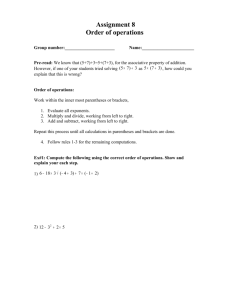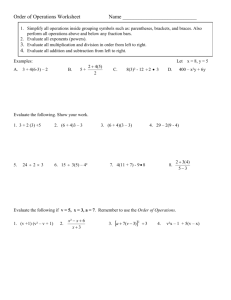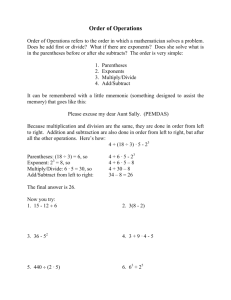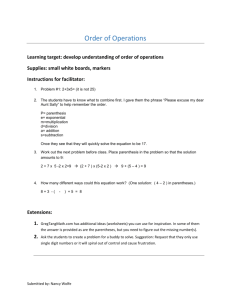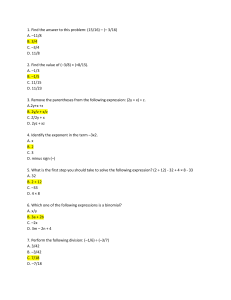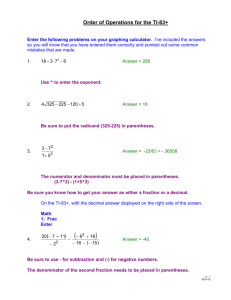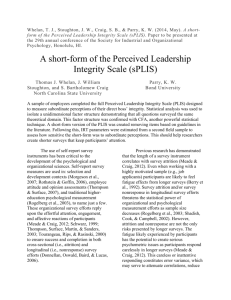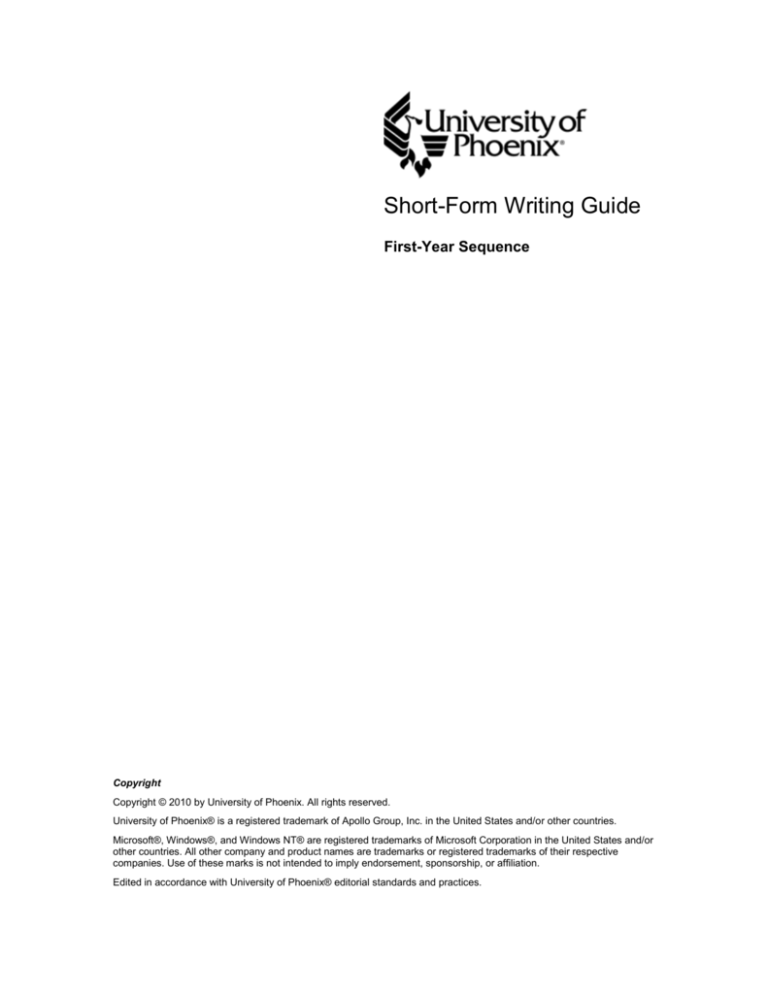
Short-Form Writing Guide
First-Year Sequence
Copyright
Copyright © 2010 by University of Phoenix. All rights reserved.
University of Phoenix® is a registered trademark of Apollo Group, Inc. in the United States and/or other countries.
Microsoft®, Windows®, and Windows NT® are registered trademarks of Microsoft Corporation in the United States and/or
other countries. All other company and product names are trademarks or registered trademarks of their respective
companies. Use of these marks is not intended to imply endorsement, sponsorship, or affiliation.
Edited in accordance with University of Phoenix® editorial standards and practices.
Short-Form Writing Guide
First-Year Sequence
Introduction
This short-form writing style guide has been specially created for the First-Year Sequence of
courses at University of Phoenix.
The purpose of this guide is to provide the basic rules necessary for writing papers that are
consistent in style and formatting and that respect the intellectual property rights of experts whose
material you refer to in your formal papers. This guide is consistent with the university Writing &
Style Guidelines and with the publication style of the American Psychological Association (APA).
If you have any questions about what these rules mean or how to use them, always check with
your instructor.
Formatting Your Paper
Font Styles
All text must be written in the same font.
Use Times New Roman, Arial, or Courier, 12-point size.
Use italics sparingly for emphasis; do not use bold, underlining, or all capital letters.
Margins
Use 1-inch margins on all sides of each page.
Align text to the left side of the page, leaving the right side ragged.
Spacing
Indent the first line of each paragraph ½ inch, or one tab.
Double-space throughout the text, including the title page and reference page.
Leave one space between words.
Use either one space or two spaces consistently after sentence-ending punctuation
throughout your paper.
Title Page
Double-space. Use upper- and lowercase letters, with no bold or underlining.
Include the following on your title page:
o
o
o
o
o
Title of the paper
Your name
Course title
Date
Faculty name
You can use Riverpoint Writer or the title page template in the Center for Writing
Excellence to create title pages for assignments. Riverpoint Writer is an advanced APA
style and formatting tool that may surpass the requirements for your course. Verify with
your instructor whether the tool meets the style expectations for your course.
Pages
Place the page number in the upper right-hand corner.
Include the title page, paper content, and reference page (where applicable) as one
continuous document rather than as three separate documents.
2
Short-Form Writing Guide
First-Year Sequence
Lists
Use numbered lists if you need to describe long, step-by-step processes.
Use bulleted lists only for information that is significantly easier to read as a list than as
part of the text.
Abbreviations
Use the abbreviations a.m. and p.m. for time.
For an acronym that will be used throughout the paper, write out the term the first time
and then include the acronym in parentheses. Then, in the rest of your paper, use only
the acronym.
Example:
Those decisions are made by the Department of Housing and Urban
Development (HUD). For HUD rules and regulations, contact . . .
Recognizing Intellectual Property
You must acknowledge outside sources in your paper by citing the sources in the body of the
paper (in-text citations) and on the reference page. There are three main ways of using outside
sources in your paper: quoting directly, paraphrasing, and summarizing. Each of those requires
an in-text citation and a reference page entry.
In-Text Citations
Direct quotations use two or more words taken word-for-word from the source.
Enclose direct quotations—the original author’s words—in double quotation marks to
differentiate between your words and the original author’s words.
Include the page or paragraph number of the original material in parentheses after the
quotation. This will help your reader locate the original information quickly and easily.
If you mention the author’s name in your sentence, include the year of publication in
parentheses after the name. Otherwise, place both the author’s name and the year in
parentheses after the quotation.
Example:
According to Mandelbrot and Hudson (2004), “This equilibrium market
clearing price is automatically interpreted as being the mean of a normal
probability distribution” (p. 46).
Paraphrasing is using another person’s material or information but rewriting it in your words.
Digest the information, and then rephrase it completely in your own words. Do not use
the original author’s phrasing; you may need to reuse one or two key terms, but the rest
of the wording should be yours.
If you mention the author’s name in your sentence, include the year of publication in
parentheses after the name. Otherwise, place both the author’s name and the year in
parentheses after the paraphrased information.
Example:
Some experts contend that price movement does not follow a bell curve
at all (Mandelbrot & Hudson, 2004).
3
Short-Form Writing Guide
First-Year Sequence
Summarizing is similar to paraphrasing; instead of using a particular piece of information,
though, you are reviewing an entire source in your own words.
Review the entire source and then sum it up in your own words. Do not use the original
author’s phrasing; you may need to reuse one or two key terms, but the rest of the
wording should be yours.
If you mention the author’s name in your sentence, include the year of publication in
parentheses after the name. Otherwise, place both the author’s name and the year in
parentheses after the summarized information.
Example:
Mandelbrot and Hudson (2004) have combined Mandelbrot’s
mathematical framework with Hudson’s knowledge of Wall Street.
Reference Page
Reference Page Citations
All sources cited in the body of a paper must appear at the end of the paper on a separate page
titled References, with the title centered at the top of the page.
Reference page citations include only the sources you cited in the paper. Do not include
any references that were not cited in the paper.
Personal communications—interviews, memos, bulletins, or phone calls—may be cited in
the paper but are not included in the reference page.
Each citation entry must indicate the who, when, what, and where of the source, in that
order.
o
o
o
o
Who wrote the source information: the authors’ names. If there is no author, indicate
the publisher.
When the source information was written: the year of publication. If none is indicated,
use n.d., for no date.
What is the title of the source information: the title of the article or book.
Where the source information was retrieved: For a library source, indicate the
database you used; for a website, provide the link; for a book, indicate the publishing
location.
Add a period and a single space after each element in an entry (author, date, title, and so
on) and at the end of the entry.
Alphabetize the sources by the author’s last name.
Double-space the list, and use a hanging indent (the first line of each entry is flush left,
and subsequent lines are indented ½ inch).
Reference Example – Book Source
Mandelbrot, B., & Hudson, R. L. (2004). The misbehavior of markets. New York, NY: Basic
Books.
Reference Example – Online Library Source
Lovejoy, L. (2002, Winter). The way we learn: A plan for success. Public Personnel Management,
31(4), 441–446. Retrieved from EBSCOhost database.
4
Short-Form Writing Guide
First-Year Sequence
Reference Example – Website Source
Legacee Management Systems. (n.d.). A short guide on leadership traits. Retrieved from
http://www.legacee.com/Info/Leadership/LeadershipTraits.html
For Further Information
This style guide is not intended to provide detailed instructions about every question that may
arise. For further information on style and formatting, review the following resources:
The Writing and Style Guidelines at the Center for Writing Excellence on the student
website
Publication Manual of the American Psychological Association (2010), sixth edition
The APA Style website (www.apastyle.org)
If you have any other specific questions about style and formatting, consult your course instructor.
5

